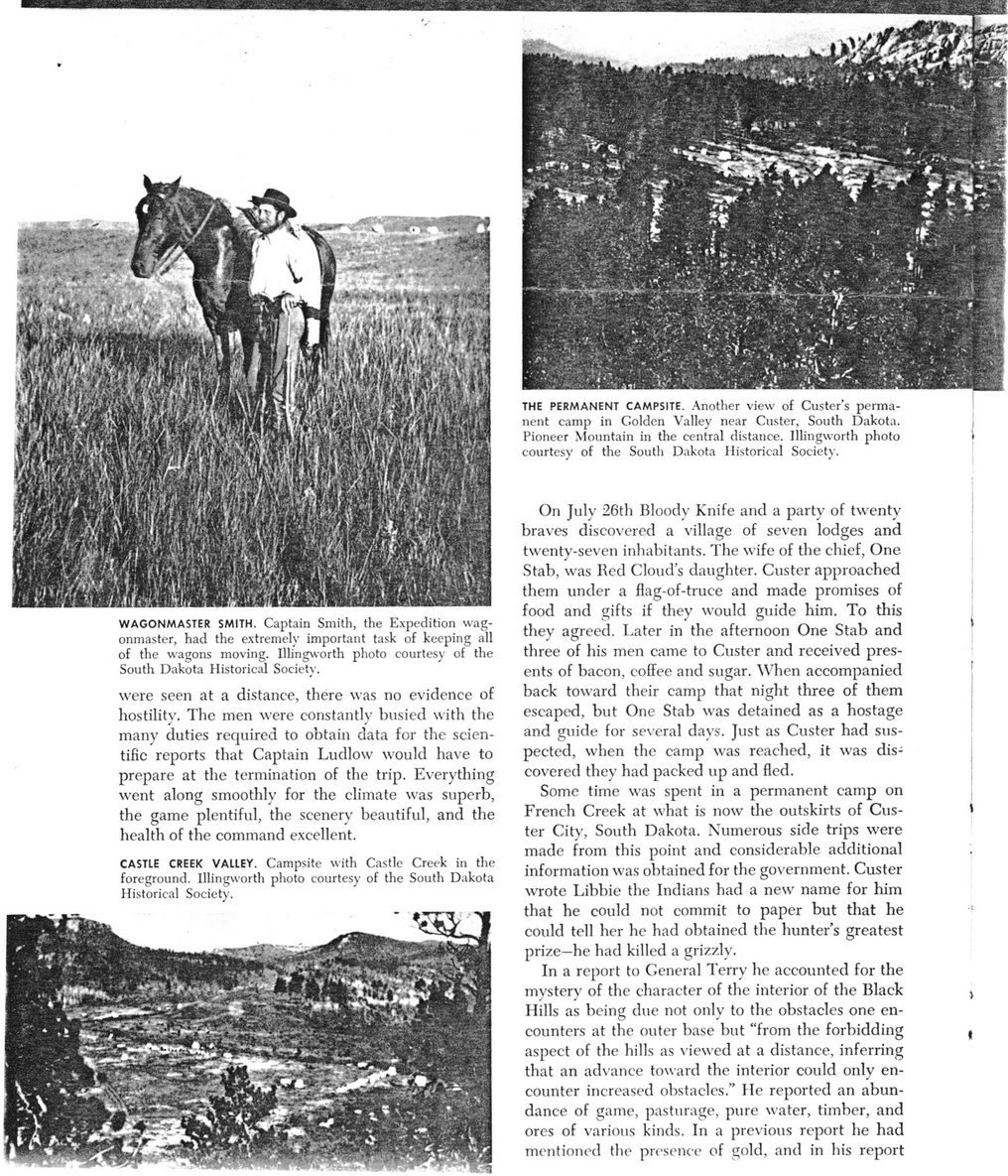This text was obtained via automated optical character recognition.
It has not been edited and may therefore contain several errors.
WAGONMASTER SMITH. Captain Smith, the Expedition wag-onmastcr, had the extremely important task of keeping all of the wagons moving. Illingworth photo courtesy of the South Dakota Historical Society. were seen at a distance, there was no evidence of hostility. The men were constantly busied with the many duties required to obtain data for the scientific reports that Captain Ludlow would have to prepare at the termination of the trip. Everything went along smoothly for the climate was superb, the game plentiful, the scenery beautiful, and the health of the command excellent. CASTLE CREEK VALLEY. Campsite with Castle Creek in the foreground. Illingworth photo courtesy of the South Dakota Historical Society. THE PERMANENT CAMPSITE. Another view of Custer?s permanent camp in Golden Valley near Custer, South Dakota. t Pioneer Mountain in the central distance. Illingworth photo i courtesy of the South Dakota Historical Society. On July 26th Bloody Knife and a party of twenty braves discovered a village of seven lodges and twenty-seven inhabitants. The wife of the chief, One Stab, was Red Cloud?s daughter. Custer approached them under a flag-of-truce and made promises of food and gifts if they would guide him. To this they agreed. Later in the afternoon One Stab and three of his men came to Custer and received presents of bacon, coffee and sugar. When accompanied [ back toward their camp that night three of them j escaped, but One Stab was detained as a hostage and guide for several davs. Just as Custer had suspected, when the camp was reached, it was discovered they had packed up and fled. Some time was spent in a permanent camp on French Creek at what is now the outskirts of Cus- ' ter City, South Dakota, \umerous side trips were made from this point and considerable additional information was obtained for the government. Custer wrote Libbie the Indians had a new name for him that he could not commit to paper but that he could tell her he had obtained the hunter?s greatest prize?he had killed a grizzly. In a report to General Terry he accounted for the mysterv of the character of the interior of the Black , Hills as being due not only to the obstacles one encounters at the outer base but ?from the forbidding t aspcct of the hills as viewed at a distance, inferring that an advance toward the interior could only encounter increased obstacles.? He reported an abundance of game, pasturage, pure water, timber, and ores of various kinds. In a previous report he had mentioned the presence of gold, and in his report

Williams, Dr John W 008